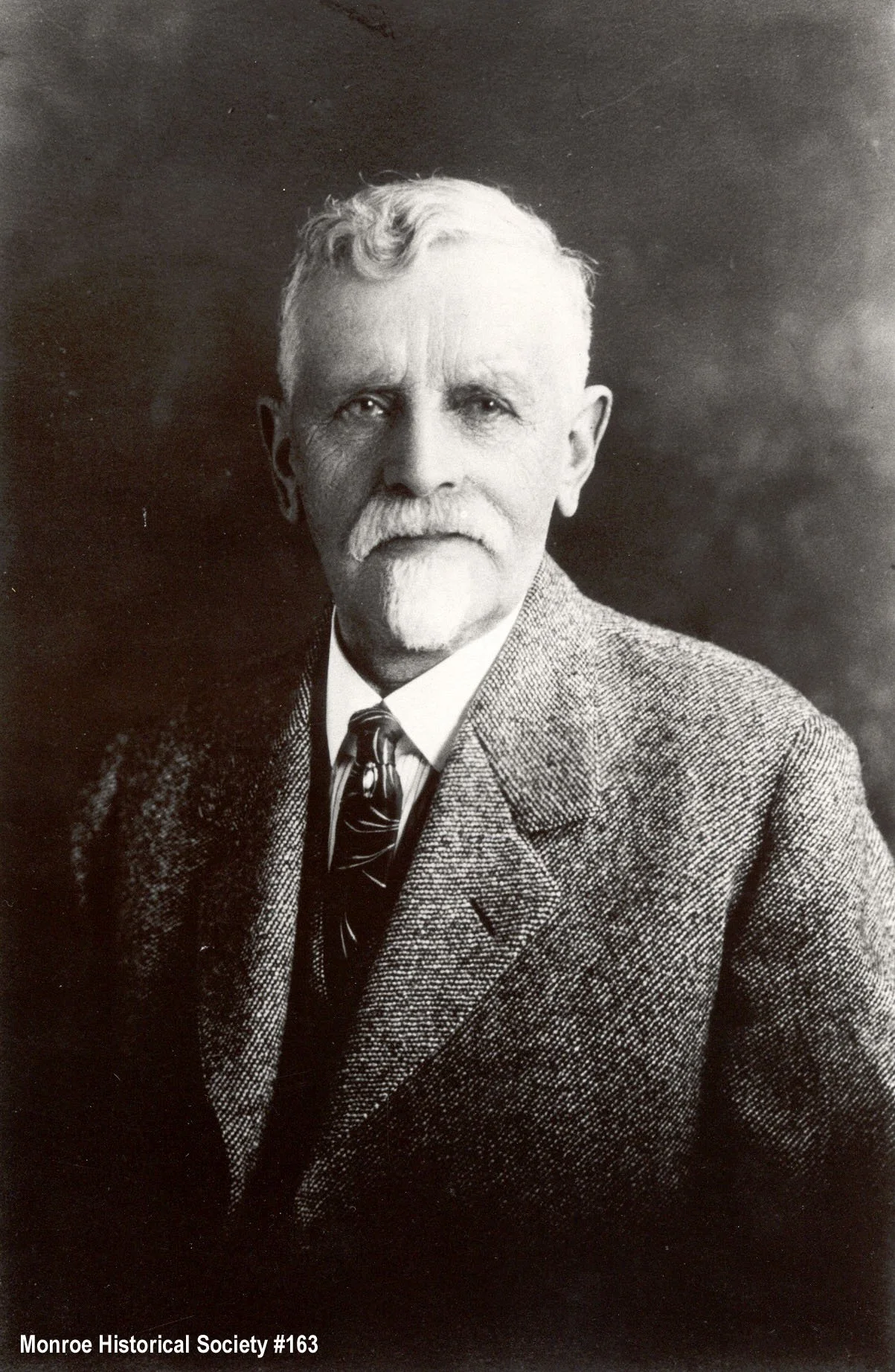The Wagner Story
A rags-to-riches German immigrant, his blind philanthropist son, a booming sawmill, and a town determined to provide its children with a quality school during the years of the Great Depression.
George Wagner, a German immigrant and key figure in early Monroe history, was a formative influence on the community. The Wagner name is found in schools, roads, and even a lake. So who was he?
In 1870, the young Johann Georg Wagner immigrated to the United States from Germany, alone and penniless. He was just 17.
He married later that year, then settled in Pennsylvania with his wife, Anna. Smart and hard-working, George rose from mill laborer to mill owner within a decade. He went on to forge a partnership with respected judge Harry Wilson, becoming the working partner of the Wagner and Wilson Mill in Clarion, Pennsylvania.
By 1880, George and Anna had three children - Charles, Frank, and Rose.
In 1899, when Frank went off to college, tragedy struck. His vision began to fail in the spring of his freshman year. He sought treatment without success, and was soon completely blind. He left school, returned home, and never regained his sight. And yet, he remained extraordinarily productive, working at his father’s mill and learning the lumber business.
In 1905, George Wagner moved his family and business operations to Monroe, Washington, where the new Wagner & Wilson mill became a major producer of lumber and shingle products in the region until 1936.
Upon George’s death in 1931, the business and family fortune passed in large part to Frank, by now a capable businessman in his own right. Well known and beloved in the community, Frank was a generous and civic-minded individual.
The auditorium was built in 1939 as part of a desperately needed new junior high school. Neither structure would have been possible without Frank Wagner. In July of 1938, school district chairman E. H. Streissguth summed it up thus in the Monroe Monitor:
“Mr. Frank Wagner has offered the district a magnificent gift of $30,000 to aid in the erection of the building, as a memorial to his father, the late George Wagner… [It is] a splendid gift… to the entire community. It is the nucleus of the entire project and without it we could not hope to have a new school. It represents more than 1½ times as much as the district is asked to raise.”
It truly was an enormous sum by Depression-era standards, equivalent to about $700,000 in 2025 dollars. This single donation covered about 22% of the entire cost of construction.
The school and auditorium were dedicated on September 15, 1939. The 700-seat house was filled to capacity in a ceremony presided over by Governor Clarence D. Martin, who declared the building “one of the finest to be found in the state,” and praised Frank Wagner’s generosity and citizenship.
For his part, Frank asked only that the auditorium be named in honor of his late father. The building was known thereafter as the Wagner Memorial Auditorium.
The auditorium served as center for school and community events for decades. But eventually deterioration began to set in. Age, earthquakes, rodents, corroding pipes, and budgetary constraints all took their toll; the building became essentially unusable.
In 2012, the Monroe Arts Council partnered with the Monroe School District to lease the auditorium and to undertake improvements. Through fundraising drives, volunteer effort, grants and donations, much has been accomplished; the building is once again in regular use, and the restrooms and lobby are undergoing renovation.
Other initiatives include replacement of the 50-year-old stage drapes and a long-term project to reupholster all the seats. As of August 2025, 120 have already been completed with the help of Monroe Upholstery and many wonderful community volunteers.
Our vision is to restore the grand old auditorium to its rightful position as a center for community events in Monroe – the town the Wagners helped to build.








